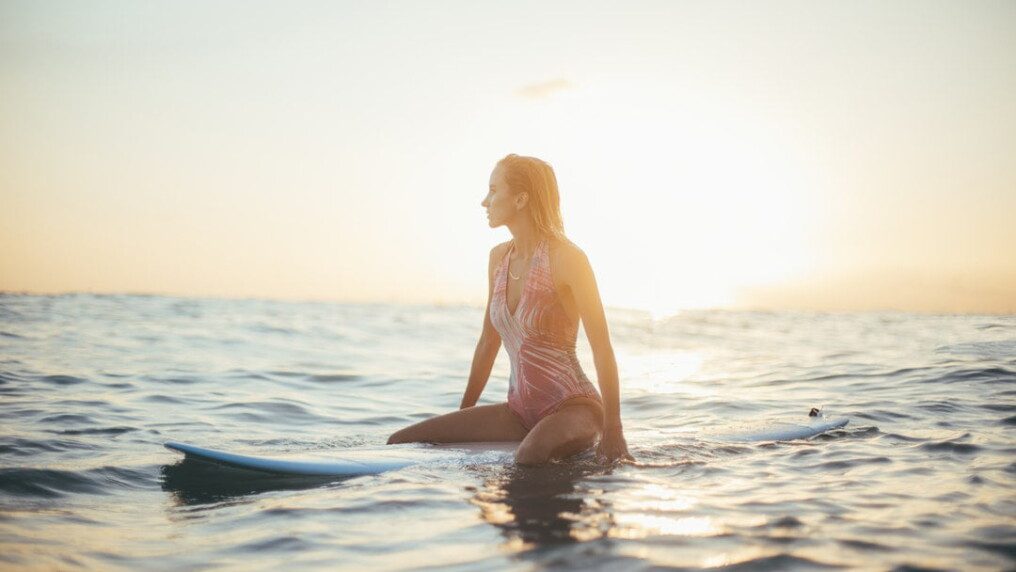
Hawaii welcomes over 9 million visitors per year, making it one of the most popular travel destinations in the States. Many of those visitors love to visit Hawaii’s beaches and swim in the ocean. Unknown to most of them, this simple activity has consequences for the area’s ocean life.
It’s not the people themselves that are presenting a problem for Hawaii; it’s the sunscreen they wear. Sunscreens get washed off into the water, where they form an oily slick. Their ingredients can damage coral reefs.
In 2018, Hawaii became the first U.S. state to approve a ban on the sale and distribution of sunscreens that contain certain ingredients. Here’s everything you need to know about the Hawaii sunscreen ban.
The Ban’s Details:
Hawaii’s sunscreen ban was signed into law in May 2018. It officially goes into effect on January 1, 2021. It will prohibit the sale or distribution in the state of any sunscreens that contain oxybenzone and octinoxate.
Products that contain these ingredients will still be allowed with a licensed health-care provider’s prescription.
Why is There a Ban?
These two ingredients are commonly used in many sunscreen brands to prevent UV rays from penetrating our skin. However, many studies are indicating that they are deadly to coral.
Haereticus Environmental Laboratory conducted a study that links these two ingredients to coral bleaching, deformed growth, and death. They’re particularly dangerous to young coral, which will grow a skeleton around themselves, become brittle, and dissolve into the ocean. The chemicals also suck nutrients from the coral, draining them of their vibrant colors.
Once a reef dies off it does not return, which is why the situation is very serious to Hawaii’s officials. Coral reefs provide shelter for ocean creatures and help tourism in many parts of the world.
Hawaii is not the only location seeing coral dying off due to sunscreen use. The same laboratory that conducted the Hawaiian research has also observed coral reefs dying in the U.S. Virgin Islands because of oxybenzone and octinoxate.
Oxybenzone, in particular, may be harming other marine life such as fish and sea urchins. It’s estimated that 14,000 tons of sunscreen wash off humans into the oceans every year. Banning sunscreens with these two ingredients won’t completely solve the problem, but it is a step in the right direction.
The ban also presents challenges for sunscreen brands. In order to sell their products in Hawaii, they’ll have to produce new sunscreen formulas without these ingredients.
Concern About the Ban:
Not everyone supports the sunscreen ban. Dermatologists are concerned about skin cancer rates and the effect the ban could have on them.
The Consumer Healthcare Products Association, which represents sunscreen manufacturers, argues that many other factors could be contributing to coral reef die-off. Wastewater from ships can also pollute the ocean and compromise marine life.
There’s also no way of enforcing the ban on Hawaii visitors that bring their own sunscreen that may contain the two prohibited ingredients. Hawaii officials must trust that beachgoers will use responsibly manufactured sunscreen.
Nonetheless, Hawaii’s ban is inspiring other tourist destinations to take similar action. The Caribbean island of Bonaire enacted the same ban, which will also take effect on January 1, 2021.
Alternatives to Banned Sunscreens:
So what can a tourist in Hawaii do to help preserve the environment and protect themselves from the sun? Obviously, you want to avoid wearing sunscreens that contain the two soon-to-be prohibited ingredients.
Instead, look for mineral-based sunscreen formulas made with zinc oxide or titanium oxide. These two ingredients are less toxic to humans and marine life and are considered “reef friendly.”
A good rule of thumb is to look for sunscreens with a simple amount of ingredients. They’re less likely to contain components that can damage the sea in other ways. Organic sunscreens and children’s formulas are often safer bets.
In addition to wearing these other types of sunscreens, don’t forget to protect your skin in other ways from the sun when not swimming in the ocean.
Wear a hat with a brim wide enough to shield your face from the sun’s rays. Sunglasses are also a must. Use a beach umbrella to hide underneath while you relax or reapply sunscreen.
UV or sun protection clothing blocks both UVA and UVB rays. When choosing this type of clothing, look for an Ultraviolet Protection Factor (UPF) of at least 30 or more to protect your skin. The higher the UPF number, the less UV radiation can pass through it.
By contrast, a plain white cotton t-shirt has a general UPF rating of only five, which means it offers very little protection against the sun. Sun protection clothing is designed of breathable materials that shield you from the sun.
Mind the Other Products You Use at the Beach:
Besides sunscreen, many people use other beauty products at the beach such as body moisturizer, skin cream, and spray-on hair condition.
The problem is these products often contain chemicals that can harm ocean life just as much as sunscreens can.
The solution? Use beauty products and brands that contain as many natural ingredients as possible. Whish is an example of a company dedicated to making the natural body, face, and hair products.
Know the Facts About the Hawaii Sunscreen Ban:
Knowing these facts about the Hawaii sunscreen ban will help you make informed decisions about what types of sunscreen you should wear when visiting the state. You can also feel confident knowing you are helping the environment and the area’s marine life by wearing appropriate sunscreen.
News Buzz helps you stay informed of the latest world news such as the Hawaii sunscreen ban. Read our latest world news posts to know what news stories are taking place around the globe.
Read Also:




























